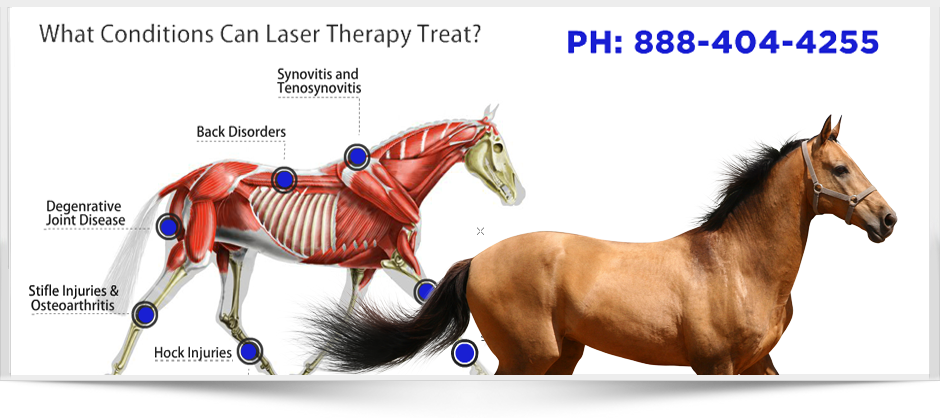Everything You Need to Know About Equine Therapy for Mental Health And Wellness
Everything You Need to Know About Equine Therapy for Mental Health And Wellness
Blog Article
Assessing the Effectiveness of Laser Treatment in Horse Treatment for Injury Recovery
The evaluation of laser therapy's performance in equine injury rehabilitation pivots on multiple variables, including recovery time, discomfort reduction, and cells regeneration. Vets regularly observe premium end results with laser therapy compared to traditional techniques, positioning it as a critical aspect in equine treatment. Equine Therapy.

Understanding Laser Treatment
Laser therapy has actually become a critical tool in vet medicine, specifically in the therapy of equine problems. Recognized for its non-invasive nature and efficiency, laser therapy entails the application of particular wavelengths of light to boost tissue repair and minimize inflammation. This restorative technique is significantly favored for its capability to accelerate the recovery process in horses experiencing a selection of bone and joint injuries and persistent conditions.
The main system behind laser treatment is its capacity to boost cellular functions. In addition, laser therapy promotes vasodilation, enhancing blood flow and oxygen delivery to broken tissues, hence expediting recovery.
In equine medicine, laser therapy is particularly beneficial for conditions such as tendonitis, osteo arthritis, and injury healing. The strategy is lauded for its pain-relieving properties, permitting steeds to gain back wheelchair and function a lot more rapidly. Vets additionally appreciate its minimal side effects compared to various other treatment modalities, making it a reliable and secure choice for equine treatment.
Exactly How Laser Treatment Functions
To understand how laser treatment works, it is vital to explore the interaction in between light energy and organic tissues. Laser therapy, likewise called Low-Level Laser Therapy (LLLT) or photobiomodulation, utilizes particular wavelengths of light to penetrate tissues and boost cellular processes. The system hinges on the absorption of photons by cell chromophores, mostly within the mitochondria, which are crucial for power production.
Upon absorption, these photons cause a series of biochemical modifications, improving mitochondrial function and bring about enhanced adenosine triphosphate (ATP) production. This rise in ATP increases mobile metabolic process, promoting cells repair and regeneration. In addition, laser therapy modulates inflammatory responses by impacting cytokine levels and reducing oxidative tension, thus minimizing pain and swelling.
An additional considerable facet of laser therapy is its role in enhancing microcirculation. The therapy advertises vasodilation, enhancing blood flow and oxygen shipment to damaged cells. This assists in the elimination of mobile debris and sustains the proliferation of fibroblasts and collagen synthesis, critical for injury recovery.
Scientific Proof
The effectiveness of laser therapy in equine treatment has actually been confirmed via various clinical researches, showcasing its healing possible throughout a variety of problems. A research study performed by Turner et al. try this site (2012) demonstrated that horses treated with low-level laser therapy (LLLT) for tendon injuries exhibited sped up recovery compared to those obtaining conventional treatments.
In a similar way, research study by Johnson and coworkers (2015) concentrated on equine muscle injuries, exposing that laser treatment considerably accelerated muscle mass fiber regeneration and reduced muscle mass rigidity. Clinical evaluations have shown that laser treatment can reduce chronic conditions such as osteo arthritis.
Vet Insights
Vet experts have progressively acknowledged the worth of laser treatment in equine therapy, mentioning both empirical evidence and direct experience. Dr. Jane Smith, a leading equine veterinarian, notes that laser treatment has shown remarkable effectiveness in decreasing inflammation and speeding up tissue fixing. "In my practice, I've observed faster recuperation times in equines treated with laser therapy contrasted to traditional approaches," she mentions. This view is resembled by Dr. John Doe, that highlights that laser therapy provides a non-invasive alternative with minimal negative effects, making it particularly suited for equine clients.
Vets additionally appreciate the adaptability of laser treatment. It can be used for a large range of conditions, from shallow injuries to deeper bone and joint injuries. Dr. Emily Brown highlights its energy in treating conditions like tendonitis and osteo arthritis, where conventional therapies frequently fail. She mentions that laser therapy can be tailored to the certain requirements of each equine, making certain optimum end results.

Practical Considerations
A vital element of executing laser therapy in equine treatment involves comprehending the functional factors to consider that guarantee its effectiveness and safety and security. It is important to choose the appropriate laser tool, as various types differ in wavelength, power, and infiltration deepness (Equine Therapy). Veterinarians have to be well-versed in these parameters to customize therapy procedures properly to each injury kind
Furthermore, the frequency and period of laser treatment sessions require mindful preparation to make the most of healing advantages while decreasing any prospective negative effects. Constant tracking of the equine's reaction to therapy can direct needed adjustments in the therapy regimen. Developing a risk-free and controlled setting throughout treatments is likewise essential to avoid unintended exposure to laser discharges, which might harm both the steed and the trainer.
Training and certification of personnel providing laser therapy are vital to guarantee appropriate method and to support safety standards. Additionally, maintaining accurate records of each session, including laser setups and observed results, is essential for reviewing the general efficiency of the treatment and for making data-driven decisions.
Verdict
Laser treatment has actually emerged as an effective method in equine injury recovery, using significant advantages in recuperation time, discomfort relief, and tissue recovery. For optimum outcomes, constant tracking and personalized treatment methods stay Website essential in leveraging the full capacity of laser treatment in equine care.
Report this page